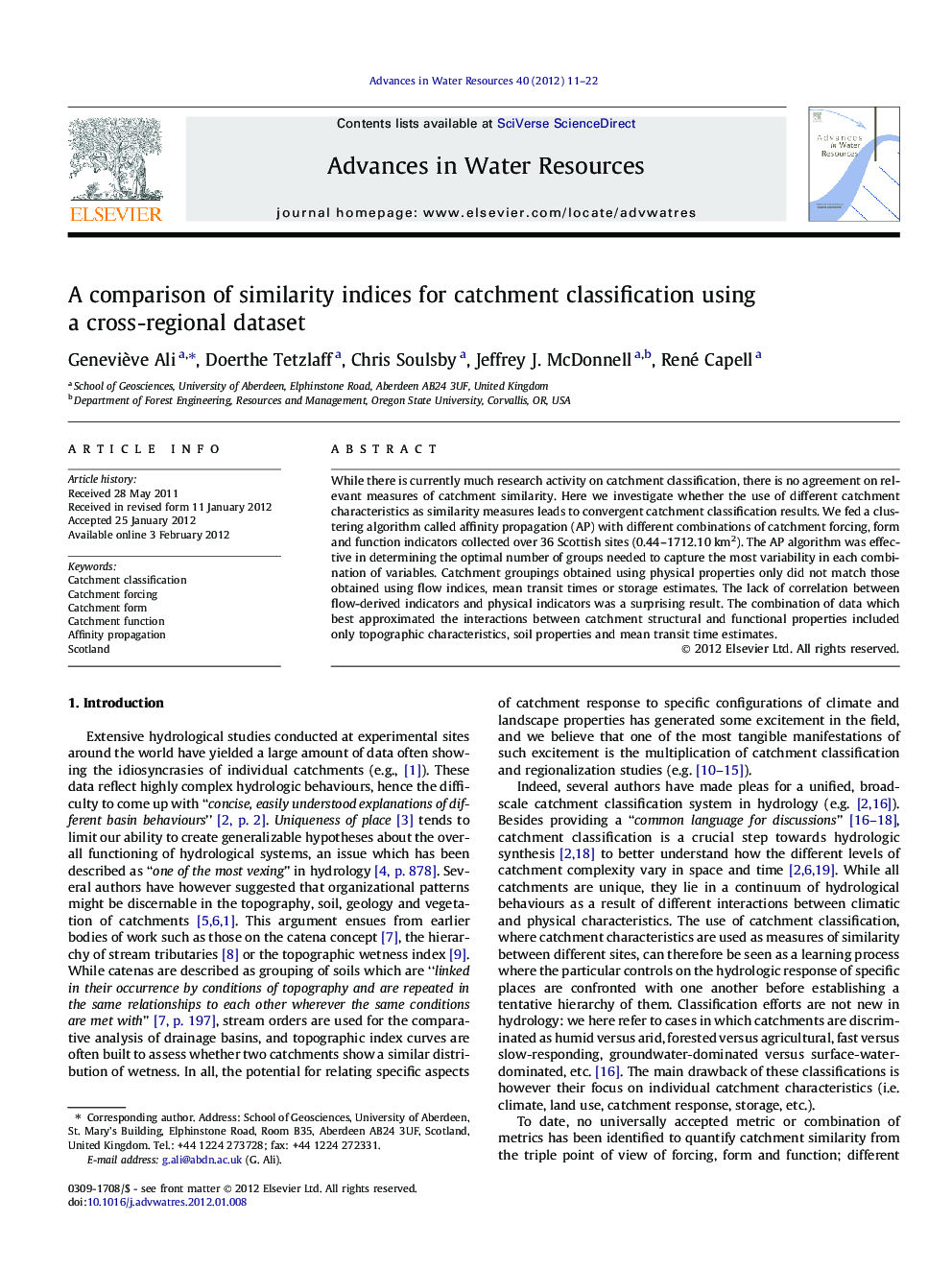| Article ID | Journal | Published Year | Pages | File Type |
|---|---|---|---|---|
| 4525927 | Advances in Water Resources | 2012 | 12 Pages |
While there is currently much research activity on catchment classification, there is no agreement on relevant measures of catchment similarity. Here we investigate whether the use of different catchment characteristics as similarity measures leads to convergent catchment classification results. We fed a clustering algorithm called affinity propagation (AP) with different combinations of catchment forcing, form and function indicators collected over 36 Scottish sites (0.44–1712.10 km2). The AP algorithm was effective in determining the optimal number of groups needed to capture the most variability in each combination of variables. Catchment groupings obtained using physical properties only did not match those obtained using flow indices, mean transit times or storage estimates. The lack of correlation between flow-derived indicators and physical indicators was a surprising result. The combination of data which best approximated the interactions between catchment structural and functional properties included only topographic characteristics, soil properties and mean transit time estimates.
► The affinity propagation (AP) algorithm was applied for catchment classification. ► Various combinations of similarity indices were used across 36 Scottish sites. ► The AP algorithm identified the optimal number of classification groups. ► Catchment groupings based on structural versus functional properties were different. ► Soil properties and mean transit times were most useful to discriminate catchments.
